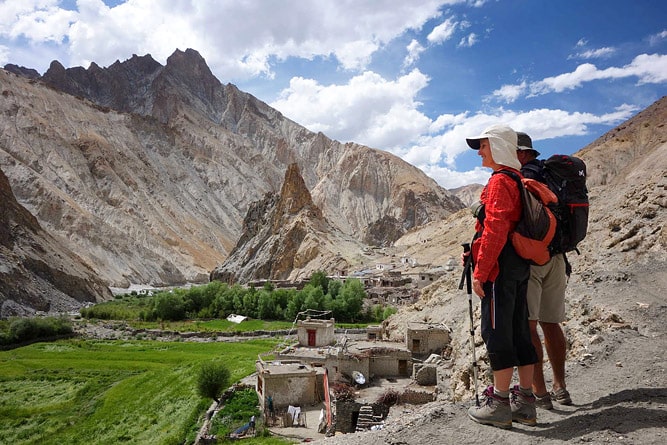The Enchanting Ladakh Trail: A Journey Through the Himalayan Wonderland
The Enchanting Ladakh Trail: A Journey Through the Himalayan Wonderland
Blog Article

Ladakh, often referred to as “The Land of High Passes,” is a mesmerizing region in the northernmost part of India, nestled between the towering ranges of the Himalayas and the Karakoram. Known for its stark landscapes, ancient monasteries, and vibrant culture, Ladakh offers a unique blend of adventure and tranquility. Among the various ways to explore this enchanting region, the Ladakh Trail stands out as an unparalleled experience for trekkers and nature enthusiasts. This article delves into the allure of the Ladakh Trail, highlighting its key features, popular routes, and essential tips for an unforgettable journey.
The Allure of Ladakh
Ladakh’s rugged beauty and serene ambiance attract travelers from around the globe. The region’s unique geographical features, including arid mountains, crystal-clear rivers, and pristine lakes, create a surreal landscape that feels almost otherworldly. The high-altitude terrain, combined with the vibrant culture of the Ladakhi people, offers a deeply enriching experience for anyone traversing its trails.
Popular Trails in Ladakh
1. Markha Valley Trail
The Markha Valley Trail is one of the most popular trekking routes in Ladakh, offering a perfect blend of natural beauty and cultural immersion. Starting from the village of Chilling and ending at the famous Hemis Monastery, this trail takes you through remote villages, high-altitude pastures, and scenic river valleys. Highlights of this trek include crossing the Kongmaru La pass (17,060 feet), visiting ancient monasteries, and experiencing the warm hospitality of the local Ladakhi people.
2. Nubra Valley Trail
The Nubra Valley Trail is a fascinating journey through one of the most picturesque valleys in Ladakh. Starting from the town of Leh, the trail takes you over the Khardung La pass, one of the highest motorable roads in the world, and into the lush, green expanse of Nubra Valley. This trail is known for its dramatic landscapes, including sand dunes, hot springs, and the confluence of the Shyok and Nubra rivers. Trekkers can also visit the Diskit Monastery, home to a giant statue of Maitreya Buddha, and the beautiful Hunder Sand Dunes, where Bactrian camels can be spotted.
3. Zanskar Valley Trail
The Zanskar Valley Trail is an adventurous trek through one of the most remote and rugged regions of Ladakh. Starting from the town of Padum and ending in the village of Darcha, this trail takes you through the heart of the Zanskar Valley, offering breathtaking views of snow-capped peaks, deep gorges, and ancient monasteries. Highlights of this trek include crossing the Shingo La pass (16,700 feet), visiting the Phuktal Monastery built into a cliffside, and experiencing the untouched beauty of the Zanskar region.
Cultural and Spiritual Insights
One of the most enriching aspects of trekking in Ladakh is the opportunity to immerse yourself in the region’s rich cultural and spiritual heritage. Ladakh is home to numerous monasteries, or gompas, each with its unique history and traditions. Key monasteries along the trekking routes include:
Hemis Monastery: The largest and wealthiest monastery in Ladakh, known for its annual Hemis festival.
Thiksey Monastery: Often compared to the Potala Palace in Lhasa, this monastery offers stunning views of the Indus Valley.
Alchi Monastery: One of the oldest monasteries in Ladakh, renowned for its ancient wall paintings and wood carvings.
Preparing for the Ladakh Trail
1. Acclimatization
Ladakh’s high altitude requires proper acclimatization to avoid Acute Mountain Sickness (AMS). It is advisable to spend a few days in Leh, the capital of Ladakh, before starting your trek to allow your body to adjust to the altitude.
2. Physical Fitness
Trekking in Ladakh demands good physical fitness and stamina. Regular cardiovascular exercises, strength training, and practice hikes will help prepare your body for the challenging terrain.
3. Gear and Equipment
Essential gear for Ladakh Trek includes sturdy trekking boots, layered clothing for varying temperatures, a good quality sleeping bag, trekking poles, and a first-aid kit. Additionally, ensure you carry sufficient water and high-energy snacks to stay hydrated and energized during the trek.
Environmental Responsibility
Ladakh’s fragile ecosystem calls for responsible trekking practices. Trekkers should adhere to the principles of Leave No Trace, ensuring they minimize their environmental impact by carrying back all non-biodegradable waste, respecting local wildlife, and staying on designated trails.
Conclusion
The Ladakh Trail offers an extraordinary journey through one of the most beautiful and culturally rich regions in the world. Whether you’re exploring the scenic Markha Valley, the lush Nubra Valley, or the remote Zanskar Valley, each trail presents its own unique set of challenges and rewards. As you traverse the high-altitude landscapes, visit ancient monasteries, and interact with the warm and hospitable Ladakhi people, you’ll gain a deeper appreciation for this Himalayan wonderland. Embrace the adventure, respect the environment, and immerse yourself in the enchanting beauty of Ladakh.
For more information visit our website: https://lifeontheplanetladakh.com